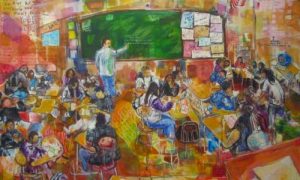There is a myth in Thailand that one must learn English from a native speaker. Propagating this myth are the many beneficiaries of the practice, which does not include learners. Ignoring research that shows to learn English, one does not need a native English speaker (NES) only emphasizes the myth-makers dominance. After all, if the students were to use English, they would encounter the concepts of competency, dynamism, and evolution.

There are many reasons that non-native English speakers can be just as competitive and skilled as native speakers—and can even offer knowledge to their students that native speakers never could.
Unfortunately, not everyone recognizes this yet. So in this post I’ve distilled four common myths about native English speakers’ supposed superiority over their non-native counterparts, and discussed why they’re not always true.
Or “a NES or European NNES” means white. Businesses, class creators, and teachers promote the idea, hence the recent MOE bold plan to recruit 10,000 NES to improve Thai students’ ability to communicate in global business. This and other projects fail because they are based on myths, not facts.
Who are native speakers? There are about 18 countries that are classed as native English speaker countries. Yet, many recruiters in Thailand cannot name more than five passport holders with a certain look. South Africa is not one. Job boards regularly mention the big five, yet there are more countries to choose from.
Learn more about this topic by reading on The Thaiger.
After reading “The Myth of Native English Teachers” you can check important issues for ESL teachers on the section PDFs, and visit my YouTube channel.






